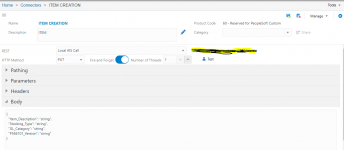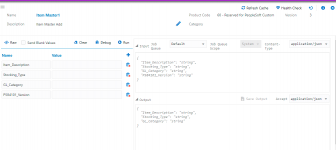nasur.mca
Member
Dear All,
I have created and published a orchestration to create item in item master and its working fine locally.
I want to generate service file to call it from outside.
I am new to this orchestrator development .
Can anyone please help me how to create a connector file using rest api for the below .
Thanks & Regards,


I have created and published a orchestration to create item in item master and its working fine locally.
I want to generate service file to call it from outside.
I am new to this orchestrator development .
Can anyone please help me how to create a connector file using rest api for the below .
Thanks & Regards,



